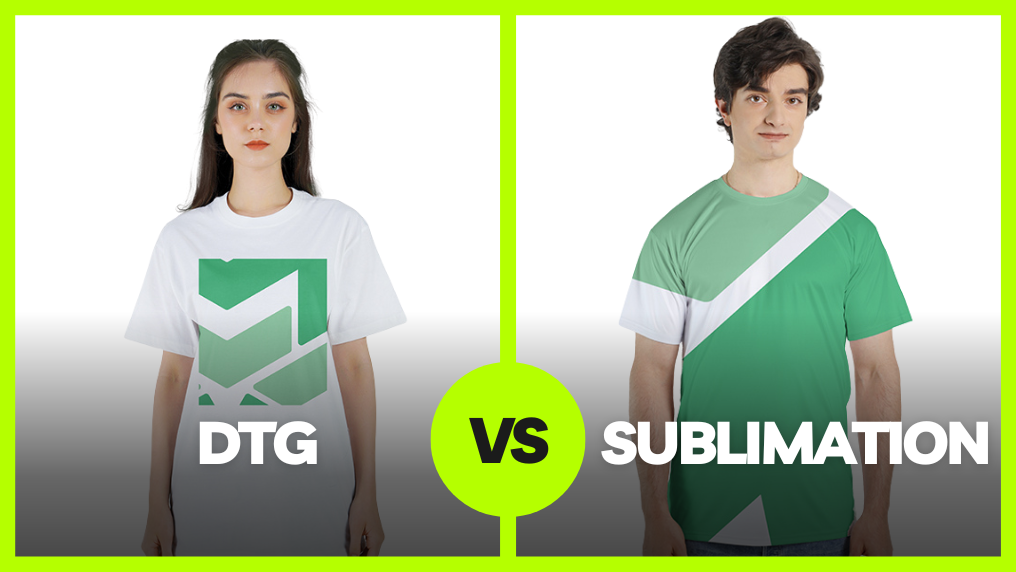Heat Transfer Vinyl Printing: Transform Your T-Shirt Game Today
Heat Transfer Vinyl Printing: Transform Your T-Shirt Game Today
Blog Article
A Comprehensive Overview to the Various Sorts Of Cloth Printing Methods
Starting an exploration of fabric printing strategies discloses an interesting junction of custom and advancement. Each method, from the careful workmanship of block printing to the quick efficiency of screen printing, offers one-of-a-kind purposes and provides unique advantages. Digital printing's flexibility and environmental consciousness stand in plain contrast to the swift customization of heat transfer printing. Color sublimation printing captivates with its ability to produce dynamic, enduring layouts on artificial fabrics. To truly grasp the subtleties and potential applications of these diverse strategies, a much deeper investigation is vital.
Block Printing
Block Printing, one of the oldest methods of textile decor, has a rich history that dates back to old people. The procedure includes sculpting intricate layouts into wood blocks, which are after that dipped in dye and pushed onto fabric to create patterns.
The precision and craftsmanship entailed in block printing make it a labor-intensive process, however it also allows for a high degree of personalization. Craftsmens can create special patterns by incorporating different blocks or varying the application of dye. This flexibility has added to the enduring popularity of block printing in both typical and contemporary textile layout.
Block printing is specifically valued for its aesthetic high qualities, consisting of the minor variations in pattern and shade that result from the hand-printing procedure. These imperfections offer a distinct character to every item, identifying it from mass-produced textiles. Despite breakthroughs in modern printing innovations, block printing remains a valued technique, celebrated for its historic relevance and imaginative worth.
Display Printing
Screen printing, an additional popular fabric design strategy, has reinvented the sector with its effectiveness and flexibility. This method entails producing a stencil, recognized as a display, and using it to apply layers of ink on the printing surface. Each shade in the design needs a separate display, which enables complex and vivid multi-colored prints.

One of the crucial benefits of screen printing is its adaptability to various sorts of materials, consisting of cotton, polyester, and blends. This method is particularly ideal for large-volume orders because of its cost-effectiveness and rate. The sturdiness of the prints is one more substantial advantage, as the ink bonds well with the material, making sure long-lasting styles that withstand multiple washes.
When dried, the design is moved onto the emulsion-coated display utilizing a UV light resource. Ink is then pressed via the pattern onto the fabric utilizing a squeegee.
Screen printing is commonly used in the fashion sector, promotional items, and personalized clothing. Its capacity for high-grade, in-depth prints safeguards its status as a cornerstone method in textile printing.
Digital Printing
Digital printing has swiftly emerged as a cutting-edge technique in the fabric market, leveraging advanced technology to generate high-resolution styles straight onto textile. Unlike standard approaches, digital printing uses inkjet printers to deposit pigment or dye-based inks onto textiles, allowing complex and vivid patterns with an amazing level of detail and color accuracy.
One of the primary advantages of digital printing is its flexibility. This technique permits for on-demand printing, which dramatically minimizes waste and lessens supply expenses.
Moreover, electronic printing is eco pleasant. DTF printing. It utilizes water-based inks and requires less water and energy compared to standard methods, aligning with lasting techniques. The precision of electronic printing likewise permits making use of a broader range of textiles, including cotton, silk, polyester, and blends, ensuring versatility across different applications
Warmth Transfer Printing
How does warm transfer printing change textile layout? Heat transfer printing includes making use of warm and stress to move a layout from a particularly formulated paper onto click over here fabric.
One of the main benefits of heat transfer printing is its ability to generate high-quality, comprehensive images rapidly and efficiently. It is specifically fit for small manufacturing runs and customized orders, making it a prominent option for personalized garments and marketing products. Additionally, this technique is versatile, fitting different sorts of textiles including cotton, polyester, and blends.
Furthermore, warm transfer printing is relatively cost-effective contrasted to other approaches, as it calls for marginal arrangement and lower first investment - Branded clothing. This price, coupled with its capability for creating vibrant, sturdy prints, highlights its essential role in modern-day fabric style

Dye Sublimation Printing
Dye sublimation printing, a sophisticated material printing technique, supplies unequaled vibrancy and longevity for layouts on numerous artificial textiles. The printed transfer paper is then placed on the material, and both are subjected to high warm and pressure utilizing a warmth press.
Among the vital benefits of dye sublimation printing is its capability to generate continuous-tone prints with complex details and lively shades. Unlike other printing techniques, the dye enters into the textile instead of sitting on top of it, resulting in a breathable and soft surface. This strategy is particularly reliable on polyester and various other artificial materials, making it a preferred option for sportswear, banners, and home fabrics. Furthermore, color sublimation is eco friendly, as it calls for no water and creates minimal waste, aligning with lasting production practices.
Verdict
Block printing is prized for its artisanal quality, while display printing is advantageous for high-volume production. Digital printing supplies versatility and environmental advantages, whereas warmth transfer printing is optimal for rapid personalization.
Each method, from her latest blog the thorough craftsmanship of block printing to the quick performance of screen printing, offers distinct objectives and uses distinctive advantages. Digital printing's versatility and ecological consciousness stand in plain comparison to the swift personalization of warmth transfer printing. Despite developments in modern printing innovations, block printing continues to be a treasured strategy, commemorated for its historical relevance and artistic worth.
Dye sublimation printing, a sophisticated textile printing method, supplies unrivaled web link vibrancy and longevity for styles on various synthetic textiles. Digital printing offers versatility and environmental advantages, whereas heat transfer printing is excellent for fast modification.
Report this page